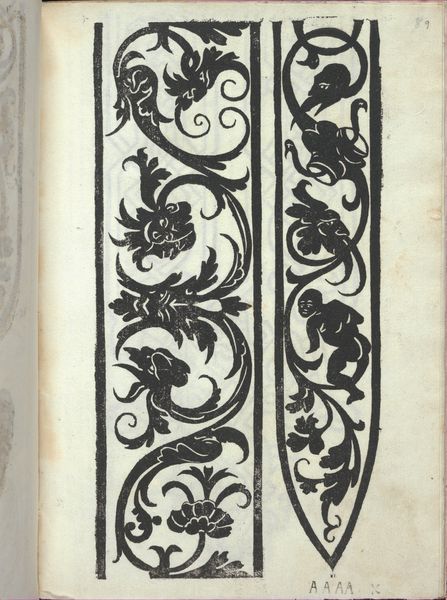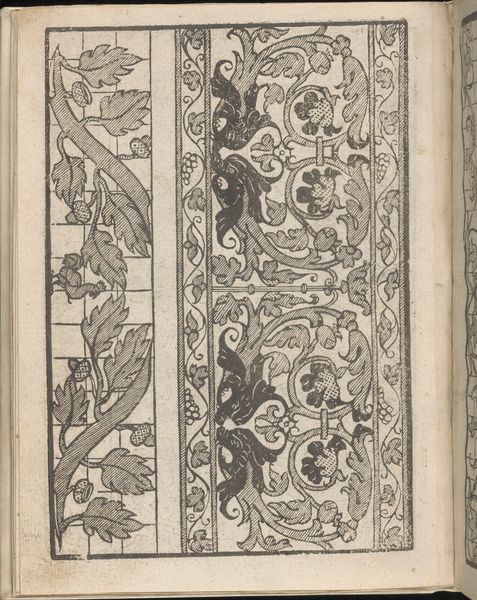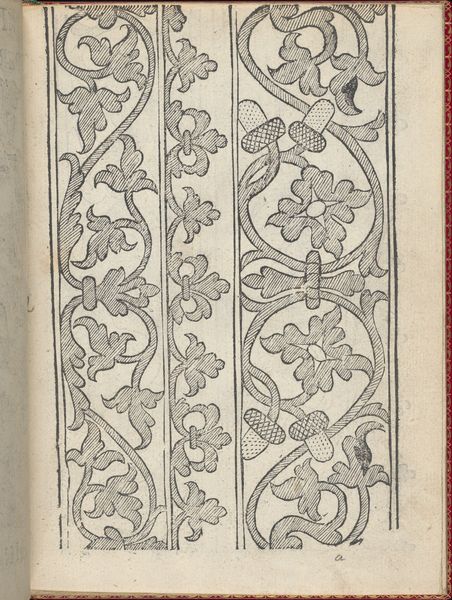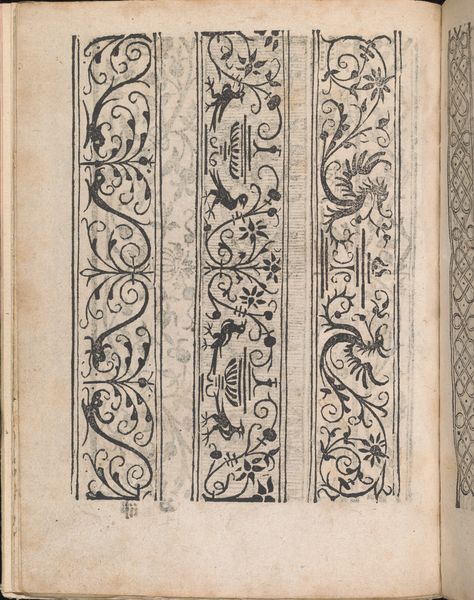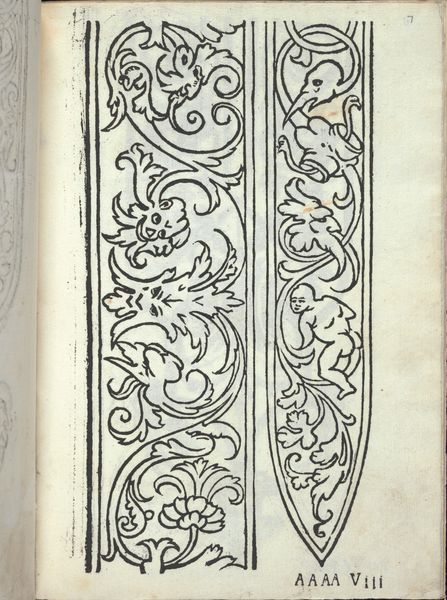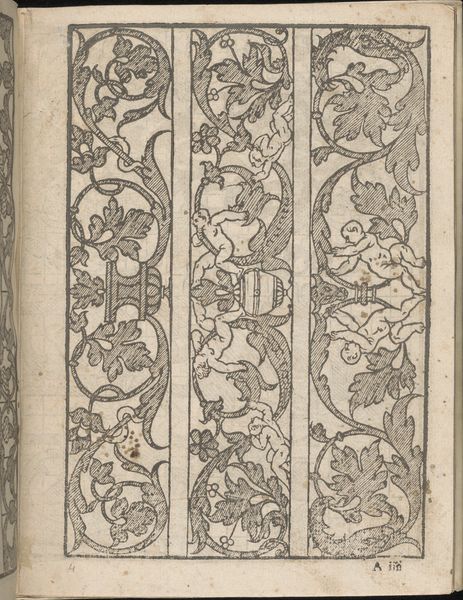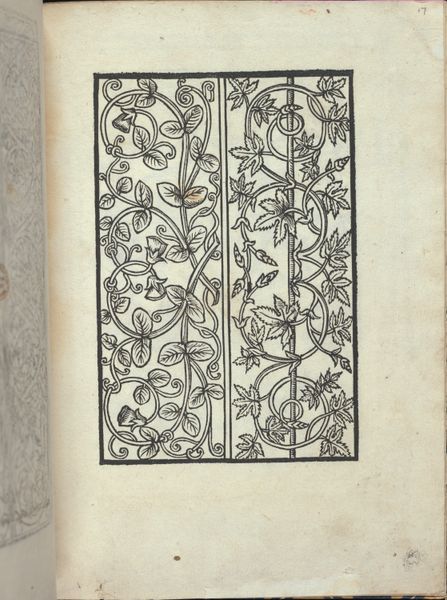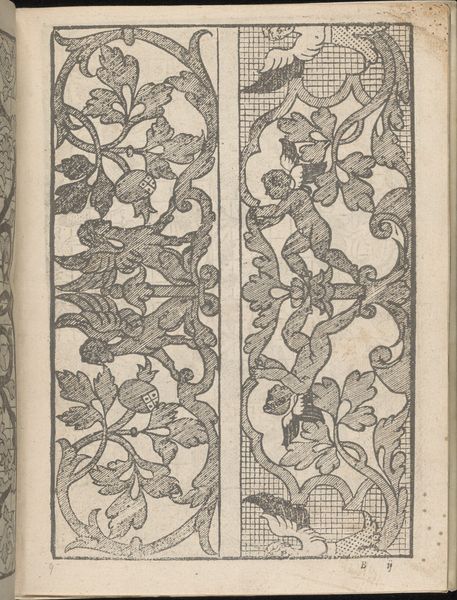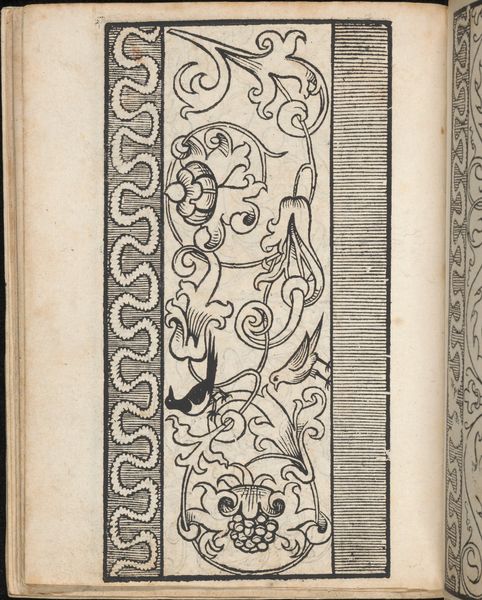
Libro quarto. De rechami per elquale se impara in diuersi modi lordine e il modo de recamare...Opera noua, page 5 (recto) 1532
0:00
0:00
drawing, graphic-art, print, woodcut, engraving
#
drawing
#
graphic-art
#
medieval
# print
#
book
#
11_renaissance
#
woodcut
#
engraving
Dimensions: Overall: 8 3/8 x 5 7/8 x 3/16 in. (21.2 x 14.9 x 0.5 cm)
Copyright: Public Domain
This woodcut comes from a book of embroidery patterns printed in Venice by Alessandro Paganino in the first half of the 16th century. Such books played a crucial role in shaping the visual culture of Renaissance Europe. The printing press democratized design, making intricate patterns accessible to a wider audience beyond the wealthy elite. Here, we see symmetrical designs featuring stylized birds and foliage, typical of the era. These patterns were not just decorative. They reflected a growing interest in naturalism and classical motifs, which permeated artistic production. Consider also the socio-economic context. Venice, a major trade center, fostered a culture of luxury and craftsmanship. Embroidery was a valued skill, and pattern books like this one catered to the demand for fashionable textiles. To fully understand the impact of this image, one might look at surviving examples of 16th-century embroidery, account books documenting textile production, and other similar pattern books. The meaning of art is always contingent on its social and institutional context.
Comments
No comments
Be the first to comment and join the conversation on the ultimate creative platform.
